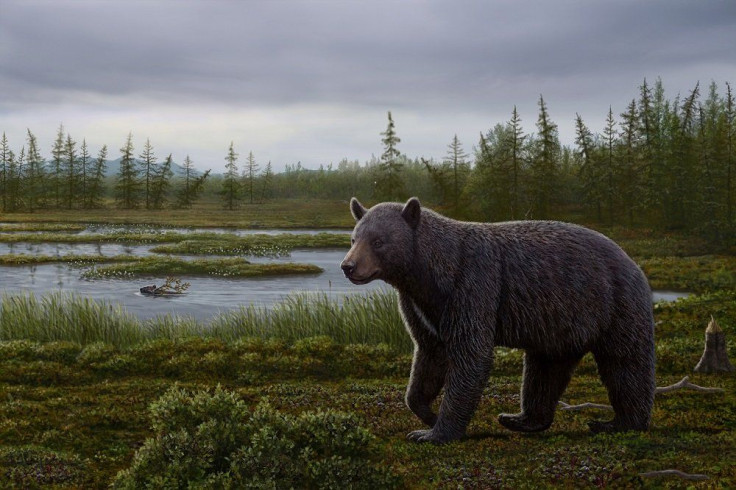Extinct Bear Had Cavities In Its Teeth From Eating Too Many Sweets

It sounds like a Berenstain Bears book: a cautionary tale about a cub who liked candy a little too much. But an extinct bear from 3.5 million years ago really had a sweet tooth, according to fossils that show its teeth were full of cavities.
The bear, from the part of Canada above the Arctic Circle, is a close relative of the ones that roam the planet today, as it was related to the modern animals’ ancestors. It was from a species called "Protarctos abstrusus" and adds fossils to the evidence for that animal — a tooth discovered in Idaho was previously the only bone in scientists’ arsenal.
The Natural History Museum of Los Angeles County described the old bear as being “transitional” — it was an evolutionary stop on the bear line leading from primitive bears to current ones. Compared to a black bear, it was smaller and had a flatter head. The cavity-pocked teeth from two individuals, including one young adult, were among the features that showed a structure halfway between primitive and modern.
“This is evidence of the most northerly record for primitive bears, and provides an idea of what the ancestor of modern bears may have looked like,” researcher Xiaoming Wang said in the museum statement. “Just as interesting is the presence of dental [decay], showing that oral infections have a long evolutionary history in the animals, which can tell us about their sugary diet, presumably from berries. This is the first and earliest documented occurrence of high-calorie diet in basal bears, likely related to fat storage in preparation for the harsh Arctic winters.”
Protarctos probably came over to North America from Asia, where the bear lineage began, and will tell scientists more about bear evolution. It also holds clues about the evolution of the environment in which it lived and the evolution of bear diets.
A study in the journal Scientific Reports says the bear remains were found at a site called Beaver Pond, a hotspot for fossils. When the Protarctos was alive a few million years ago, that area would have been warmer and forested, “radically different from today’s arid polar tundra.”
“It is a significant find, in part because all other ancient fossil ursine bears, and even some modern bear species like the sloth bear and sun bear, are associated with lower-latitude, milder habitats,” study co-author Natalia Rybczynski said in the museum statement. “So, the [Beaver Pond] bear is important because it suggests that the capacity to exploit the harshest, most northern forests on the planet is not an innovation of modern grizzlies and black bears, but may have characterized the ursine lineage from its beginning.”

© Copyright IBTimes 2024. All rights reserved.











